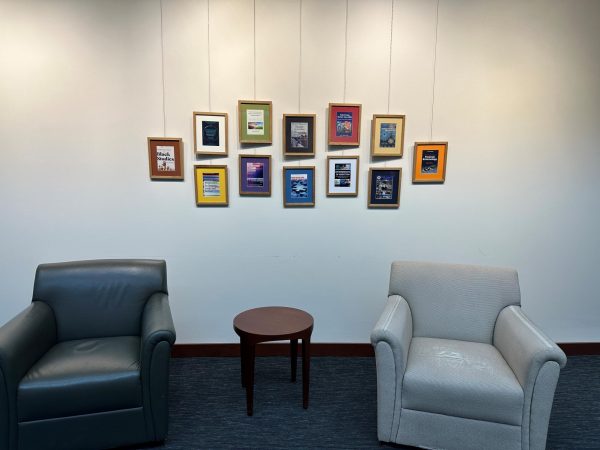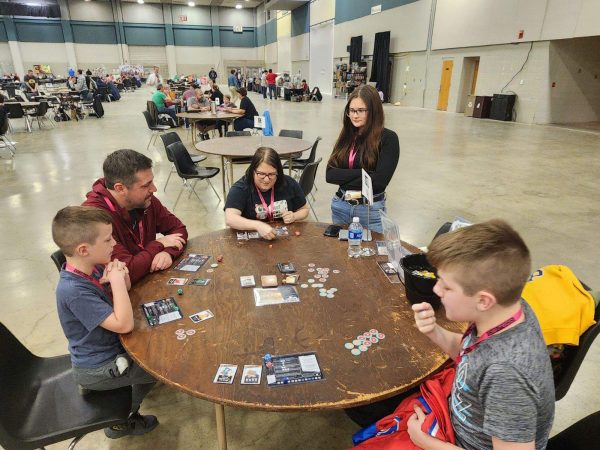‘Medieval Martian Massacre’ showcases virtual reality
Medieval Martian Massacre says a lot about itself in the title alone. Set in medieval times, the evil martians are invading Earth. It’s up to you to put a stop to their nefarious invasion, the only way you know how: bloody combat.
“It’s kind of a pet project of mine that we’ve been working on for a while,” NKU professor Nicholas Zeman said.
The game is a virtual reality 3D program created by the production team in Zeman’s Advanced Digital Media Projects class. Though its premise is simple, the use of virtual reality perspectives and motions definitely makes this game stand out.
With the use of Microsoft’s Kinect, a full-body, motion-sensitive camera, the game is able to read broad motions made by your body and apply them directly to the game. You raise your arm to raise a shield that will block the alien invaders and swing your other arm, which triggers your melee weapon, decimating those who oppose you. As enticing as it sounds, the technology is still early and fairly rudimentary.
“I don’t know where we’re gonna go with Kinect,” Zeman said. “The hardware’s still in development. The Microsoft HoloLens would be awesome. It does video projection in the real-world.”
With technology progressing forward at an alarming rate, finding an adequate platform to demonstrate an intricate motion-controlled game like Medieval Martian Massacre can be challenging. Previously, the game ran on Nintendo’s Wii Remote, with infrared sensors that are placed on your head in order to facilitate head-tracking.
“The Kinect is the best option because it can track depth,” Zeman said. “It can detect how far away you are from the Kinect, it has a cool 3D effect.”
Also showcased was the demonstration of the 3D effect separate from Medieval Martian Massacre. The program was effective in demonstrating how the Kinect utilizes your entire body in order to warp the perspective.
“It’s challenging just to get a perspective in a game to work. When you start tracking movement and pay attention to stuff moving, you completely lose any of that 3D [effect],” Zeman said.
Even Kinect is a little long in the tooth, launching almost five years ago. Since then, advances in virtual and augmented reality programs have gone through the roof.
The game was made by Zeman’s media projects class over a period of ten weeks or so. Going from the conception phase to a workable demo in a once-a-week class is no small feat, as every week would bring new challenges to the surface.












